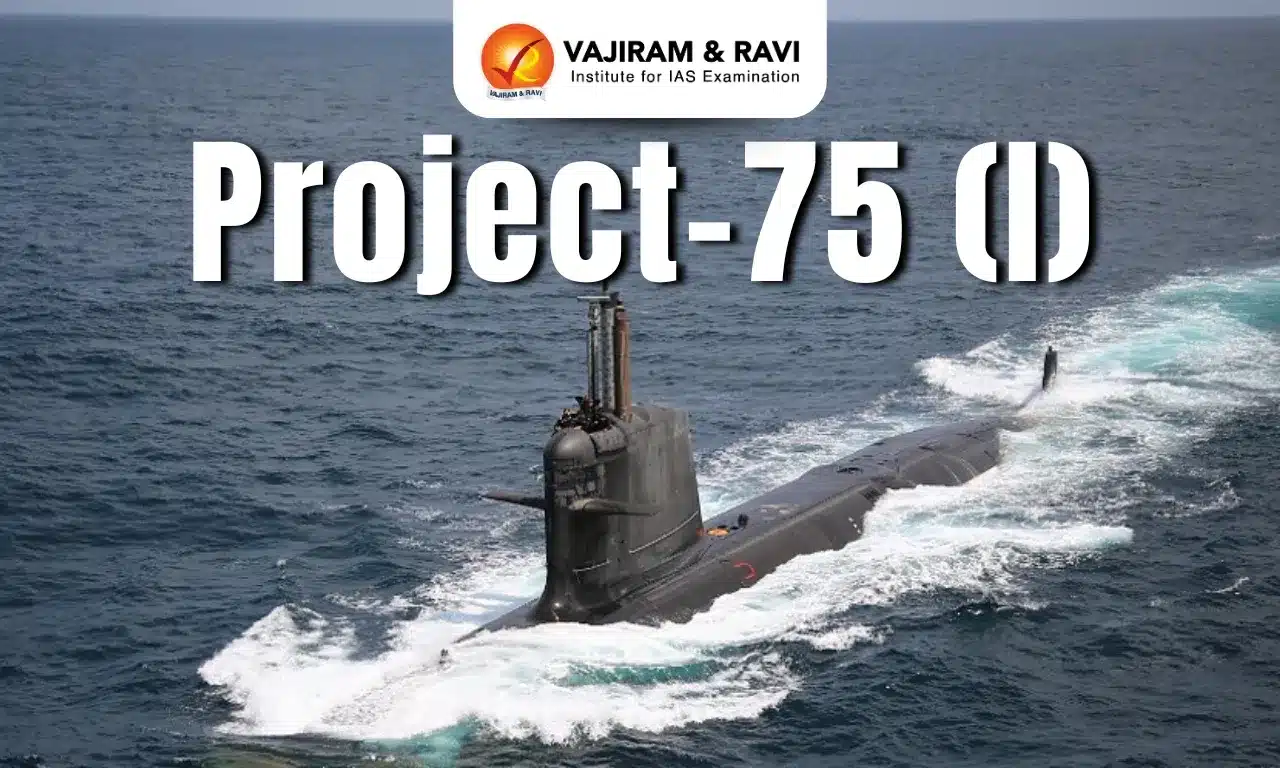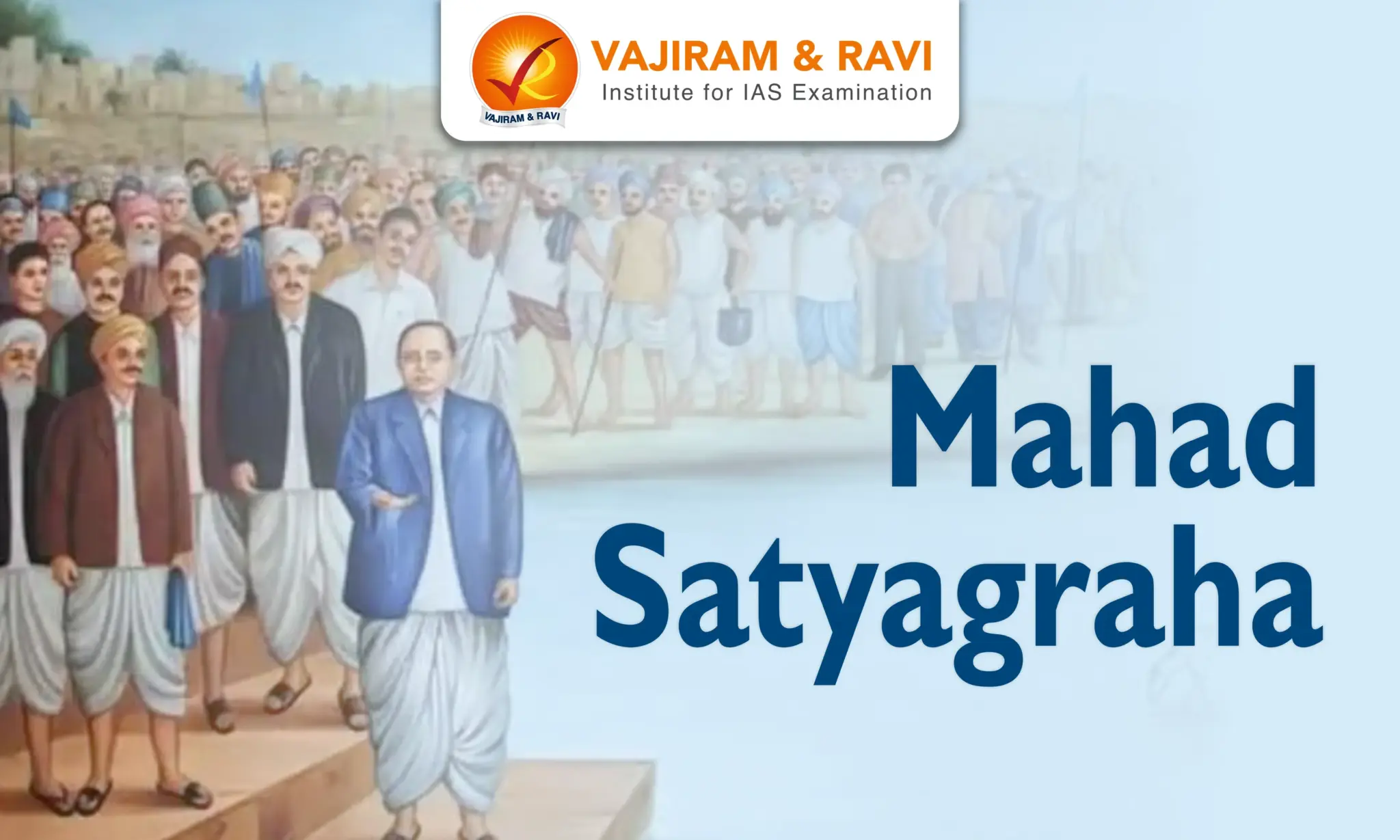Project-75 (I) envisages the indigenous construction of six Kalvari Class Diesel-Electric Attack submarines. The submarines under this project would be equippedwith contemporary equipment, weapons, sensors, modern missiles, and state-of-the-art countermeasure systems. The most important improvement over its predecessor, Project-75, is a fuel-cell-based AIP (Air Independent Propulsion) system. This would provide a major boost to the stealth ability and construction capability of indigenous submarines in India, in addition to bringing in the latest submarine designs and technologies as part of the project under Atmanirbhar Bharat. The number 75 in Project 75 refers to a unique identifier for the Scorpene class.
Background of Project 75
Project-75, the precursor to Project-75I, was initiated in 1997 with the aim of building two indigenous SSK (United States diesel-electric) submarines.
- The project was divided into two phases: Phase I and Phase II.
- Phase I involved the construction of some submarines at MDL under Project-75.
- Phase II included plans for additional submarines to be built later using indigenous capabilities.
- In 1999, the Ministry of Defence (MoD) approved a plan to construct a total of 24 submarines over a 30-year span.
- However, due to financial constraints, only six submarines of Kalvari Class - INS Kalvari, INS Khanderi, INS Karanj, INS Vela, INS Vagir, and INSVagsheer—would be authorised for operational status by the mid-2030s.
- In April 2001, the Indian Navy decided to adopt a newer submarine design, the Scorpene.
- It was offered along with the option of technology transfer (TOT) by the French naval firm Armaris.
- The construction of the submarines commenced between December 2006 and July 2009.
- However, challenges related to technology adoption, delays in improving industrial infrastructure, and procurement of materials from MDL resulted in overall project completion delays.
Features of Project-75 (I)
Project 75I (a follow-up to Project 75) is an improvement upon the design and technology of AIP technology, along with other features of its predecessor. The features of the project are:
- Stealth Features: As with the 75 submarines, they are equipped with advanced acoustic absorption techniques, low radiated noise levels, long-range guided torpedoes, tube-launched anti-ship missiles, sonars, and sensor suites.
- Diesel-electric attack Submarines under Project 75 need atmospheric oxygen to run the diesel generator, which in turn charges the batteries; hence, they need to come to the surface every 48 hours to be recharged.
- But, with the AIP technology, submarines use fuel cells that will enable them to stay submerged for up to two weeks.
- Indigenisation: The first submarine must have a minimum of 45% indigenisation, with the indigenous content going up to 60% in the sixth.
- MSME Development: The project would not only aid in boosting the core submarine building industry but also enhance the manufacturing sector, especially for MSMEs, for the manufacturing of associated spares/systems/equipment related to submarines.
- Size: The submarines under Project 75 (I) may be larger than those under Project 75.
Air Independent Propulsion (AIP) System
The AIP is an improvement in the technology through which the underwater endurance of the submarines can be enhanced so that they can remain underwater for longer durations and their security will not be compromised.
- Components: This system works with two key components, i.e., a fuel and an oxidant, to generate electricity by either a heat engine (e.g., closed cycle diesel, Stirling engine, closed cycle gas turbine) or an electrochemical cell (e.g., lead acid batteries, fuel cells).
- Working principle:
- The diesel-used electric submarines are vulnerable to detection while snorkelling. This issue was overcome by applying nuclear power to produce a ‘true submarine’ but this solution is expensive to implement.
- The need for a cheaper way to obtain long underwater endurance led to the use of fuel cells.
- They can be recharged by the diesel engine and would act as an auxiliary source of energy during the underwater drives of submarines. It will help in longer submergence.
- Indigenous AIP by DRDO:
- The Fuel Cell-powered Air-Independent Propulsion (AIP) system of DRDO’s Naval Materials Research Laboratory (NMRL) will be fitted onboard INS Kalvari.
- DRDO and Naval Group (France) signed an agreement to safely integrate the indigenous system in Kalvari-class submarines.
Issues associated with Project 75 India
A combination of structural inefficiencies, budgetary changes, tendering problems, delays, and institutional ad-hocism have hindered India’s submarine manufacturing ambitions.
- Delays: The original P-75 proposal was supposed to be completed by 2017. However, the lead boat of the P75 project, INS Kalvari, was commissioned in 2017.
- Till now, the country has commissioned the fifth submarine (INS Vagir), and the final one (INS Vaghsheer) is expected next year 2024.
- The P-75(I) programme is budgeted at Rs 43,000 crore with state-of-the-art sensors and weapons, is lagging as it is currently stuck in the tendering stage.
- Structural Inefficiencies: The indigenous AIP system developed by DRDO was not first trialed on a submarine before its contribution to the P-75(I).
- If the necessary criteria are not met, its integration into the P-75(I) program will further complicate the structural issues.
- Shortage of Submarines: The Indian Navy faces submarine shortages and is also endowed with submarines with outdated technology. It has only 16 functional submarines, with a significant portion older than 30 years, and currently doesn’t operate a nuclear-powered-attack submarine (SSN).
- Exiting Collaborators: The early existing collaborators from the P75(I) program, including Sweden and France, as well as complaints from the Russians about the technical demands of the program, have created uncertainty about the future of the project.
Way Forward
The following measures can be taken to harness the benefits of Project-75(I) and enhance India’s security capability:
- Indigenous Technology: India has wasted millions in paying ToT (transfer of technology) fees to foreign Original Equipment Manufacturers (OEMs) but has not acquired the capability to design and build submarines. Hence, it is necessary to depend on and develop technology indigenously.
- Global Collaboration: Collaboration with international partners is often essential for acquiring advanced technology, expertise, and other managerial advantages.
- Fast-track Tendering: To achieve more timely or reduced-delay completion of the project, it's essential to accelerate the implementation process, particularly in the area of tendering.
- Trial of Indigenous AIP: The indigenously developed AIP by DRDO must first be installed and trialled on a submarine before its contribution to the P-75(I) as it has been trialled only on land.
- Audit of the Project: There is a need to have regular audits of the project to monitor and streamline the spending process and reduce waste.
Last updated on November, 2025
→ Check out the latest UPSC Syllabus 2026 here.
→ Join Vajiram & Ravi’s Interview Guidance Programme for expert help to crack your final UPSC stage.
→ UPSC Mains Result 2025 is now out.
→ UPSC Notification 2026 is scheduled to be released on January 14, 2026.
→ UPSC Calendar 2026 is released on 15th May, 2025.
→ The UPSC Vacancy 2025 were released 1129, out of which 979 were for UPSC CSE and remaining 150 are for UPSC IFoS.
→ UPSC Prelims 2026 will be conducted on 24th May, 2026 & UPSC Mains 2026 will be conducted on 21st August 2026.
→ The UPSC Selection Process is of 3 stages-Prelims, Mains and Interview.
→ UPSC Result 2024 is released with latest UPSC Marksheet 2024. Check Now!
→ UPSC Prelims Result 2025 is out now for the CSE held on 25 May 2025.
→ UPSC Toppers List 2024 is released now. Shakti Dubey is UPSC AIR 1 2024 Topper.
→ UPSC Prelims Question Paper 2025 and Unofficial Prelims Answer Key 2025 are available now.
→ UPSC Mains Question Paper 2025 is out for Essay, GS 1, 2, 3 & GS 4.
→ UPSC Mains Indian Language Question Paper 2025 is now out.
→ UPSC Mains Optional Question Paper 2025 is now out.
→ Also check Best IAS Coaching in Delhi
Tags: project-75 (I) quest

















